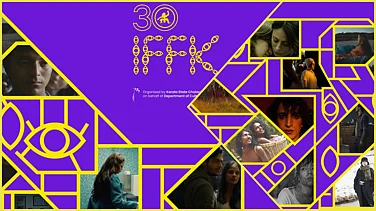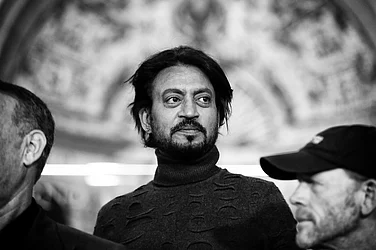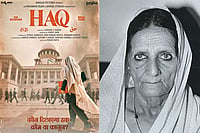Cities have been full-blown characters in many films. There are the great New York films—Scorcese’s Taxi Driver, most of Woody Allen’s films but particularly Manhattan and Annie Hall, films like Midnight Cowboy, Saturday Night Fever, Wall Street…it’s a long list. Many other American cities have been immortalized on celluloid, Philadelphia Story, Sleepless in Seattle, Leaving Las Vegas, LA Confidential, Mississippi Burning. Japanese auteur Yasujiro Ozu made many odes to Tokyo. The French New Wave directors serenaded Paris, films like Blow-Up caught the essence of 60’s swinging London, there’s Ray’s Calcutta, Almadovar’s Madrid, Inarittu’s Mexico City.
Bombay, Mumbai, Bambai features in many films. Its various social layers and classes divide the focus of filmmakers. These are a few films which touch upon the city’s unique characteristics – its streets and slums, the chawls, the middle-class, the underworld and the uber rich.
Streets and Slum
Salaam Bombay! (1988)
Mira Nair’s explosive debut feature Salaam Bombay! has aged well. After nearly 35 years, it hasn’t lost its bite and remains the most real portrayal of the city in popular cinema. Sadly, the fact that film doesn’t seem dated only shows how little has changed on the streets and slums of Mumbai in all these years.
Much before words like deep-dive and immersive became popular, the film takes you inside the red-light district of Mumbai, to Falkland Road, almost documentary-style, makes you smell the stench from the open drains, feel the sweat and the flies on people’s shoulders as well as the hopes and dreams of Bombay’s slum dwellers (which the Oscar darling Slumdog Millionaire with all its cinematic flair misses). You live with its characters, with Chaipao, the street urchin who wants to earn money, rescue the girl he covets from the brothel and cross over to a better life. You hope with him but you know deep down he will never escape these streets. You feel the helplessness of Sola Saal, the girl in the brothel who is prized because she is a virgin, who will take any route to dodge her fate but in the end gets sucked into the racket. You know it will all end badly for Chillum, the foul-mouthed, soft-hearted drug addict and peddler (a brilliant Raghuvir Yadav) but still wish him at least a decent farewell. The scheming pimp and smalltime ganglord Baba (Nana Patekar, in one of his first roles where he announced he is in for the long haul) too talks of starting life all over again. His wife Rekha (Anita Kanwar, it’s a shame we didn’t see too much of her in later years), the prostitute who dreams of a better life for her little girl.
In all this despair and meanness, where Nair’s film scores is in its wit and humour, the camaraderie and big-heartedness of the Falkland Road’s denizens, the laughter and song. It’s only used sparingly in the film, but L Subramaniam’s haunting music score still gives the goosebumps.
The Underworld
Satya (1998)
“Mumbai ka king kaun?” screams Bhiku Mhatre, standing on a cliff with the sea splashing below him and the Mumbai skyline in the background about halfway through Satya. The rising gangster has killed off most of his rivals and, along with his fiend Satya, he is closing in on their dream of ruling Mumbai’s underworld.
Ram Gopal Verma’s film perhaps comes closest to unravel the complex working of the city’s netherworld, with its own rules, own rhythm and own ethics. The narrative is powered by the set pieces of gang wars, going from the lowest level of collecting ‘hafta’ – the weekly protection money, moving on to builders, bar owners, film producers and finally financing the election. But what makes the film enduring are the little scenes, of the bonhomie between gang members, the family life of Bhiku Mhatre with his children and wife at the breakfast table or when they go out saree shopping.
Satya is written by Anurag Kashyap and Saurabh Shukla, who also plays the delightful Kallu Mama, the lovable ‘manager’ of Mhatre’s gang. Though the protagonist is J D Chakravarthy who plays Satya, a nowhere man who comes to Mumbai, Manoj Bajpayee as Bhiku Mhatre owns the film. The scenes he is in turn electric, he is in top form both as a ruthless killer and a doting family man.
The Chawl
Katha (1983)
Sai Paranjpye’s Katha is the perfect Mumbai chawl film. There is the old dadi in white saree telling stories to her grandson, there are newly-weds who never come out of the room, we only hear their sweet entreaties from outside, there is the acerbic women who can’t stand the raucous children (she slices the ball the children are playing with into two as it has broken her dahi handi, to which the neighbour shouts at her: ‘You hate children because you don’t have any of your own.’), there is the gent with disability who is always asking favours from the others, there is Sandhya, the young girl with dreams of getting out of her surroundings. And there is Rajaram, the do-gooder, the punctilious worker, the shy lover.
In the milieu enters Bhasu (a silken smooth Farooq Sheikh), the fast-talking, tale-spinning, street-smart charmer, who would be today called a ‘disruptor’. His coming robs the chawl of its innocence, especially in the lives of Rajaram (a consummate Naseeruddin Shah, getting into the skin of his character) and Sandhya (the delightful Deepti Naval, who else can play a better girl-next-door?).
The film then gets into other strands, of Bhasu pulling wool over many eyes, but the best parts are the chawl sequences, which reportedly was a real chawl in Pune, not a set. Oddly, after gems like Sparsh, Chashme Buddoor and Katha in a span of three years, Sai Paranjpye receded from the scene.
The Middle Class
Gharonda
Hrishikesh Mukherjee and Basu Chaterjee were the magicians of middle-of-the-road, middle-class Hindi cinema. But Gharonda by Bhimsain, written by Gulzar, is perhaps more of a Bombay middle-class film with its rootedness to the city. Amol Palekar (Sudip) and Zarina Wahab (Chhaya) are spot on as the working couple looking for a house of their own in a city which has everything in plenty except space. They start saving, work harder but get duped by the builder. The film takes a serious, sinister turn after this, detailing the slow corruption of the mind of an otherwise happy and honest man.
Sudip and Chhaya’s rich industrialist boss Modi, much older than them, has a soft spot for Chhaya. Without giving out any spoilers for readers who might want to watch the film, or revisit it, Sudip coaxes a reluctant Chhaya to be part of a plan that will make them rich. It’s the moral turmoil the characters face that forms the rest of the film, how the city forces them to take paths their middle-class moorings will not allow.
Bombay is shot in all it splendour, its sunny beaches are a backdrop for the carefree couple in the beginning over which dark cloud hover later in the film. The other great attraction are Gharonda’s songs—music is by the brilliant Jaidev and lyrics by Gulzar and Naqsh Lyallpuri. Runa Laila’s Tumhe Ho Na Ho and Bhupinder’s Ek Akela Is Shahar Mein are truly ageless.
The Swish Set
Dil Chahta Hai
Farhan Akthar’s coming-of-age film of three Pali Hill-type lads is about sharp hair-cuts, designer outfits and road trips in a Merc convertible. There are no slums or gangsters or open drains here, this is a Bombay of the few, whose trials and tribulations are not about housing or gun fights but matters of the heart, of commitment or lack of it, of friendship. Akthar knows this world and wades through the problems the rich face confidently.
The three friends, Aamir Khan, Saif Ali Khan and Akshaye Khanna seem real to fit this world, who also in their own way are trying to free themselves from the shackles the upper crest of the society imposes. But the film doesn’t push hard enough, it remains surface-level, the dilemmas the men face, the decisions they have to make at various stages of their lives seem frivolous.
A film about the super rich can also be stinging, like say, Alfonso Couran’s Y tu mama tambien (2001), another coming-of-age film of two adolescent boys in Mexico, with it stark inequities and looming political crisis. In DCH, there is no inward look at the privilege and entitlement the lead characters are born with or the surroundings their city offers just beneath their penthouses.
Khanna’s track with his relationship with an older woman Tara (Dimple Kapadia) is the most rebellious the film can come up but that too is conveniently resolved. But DCH looks great, has hummable songs and all the beautiful people in it are easy on the eye.



























